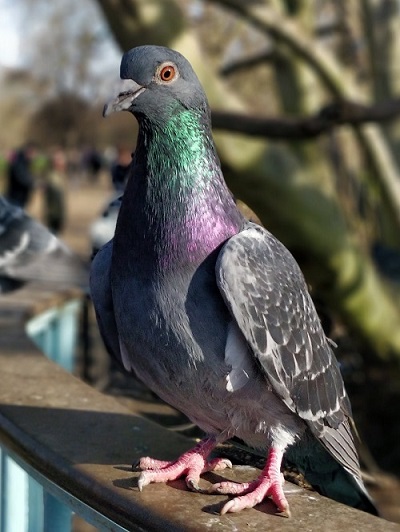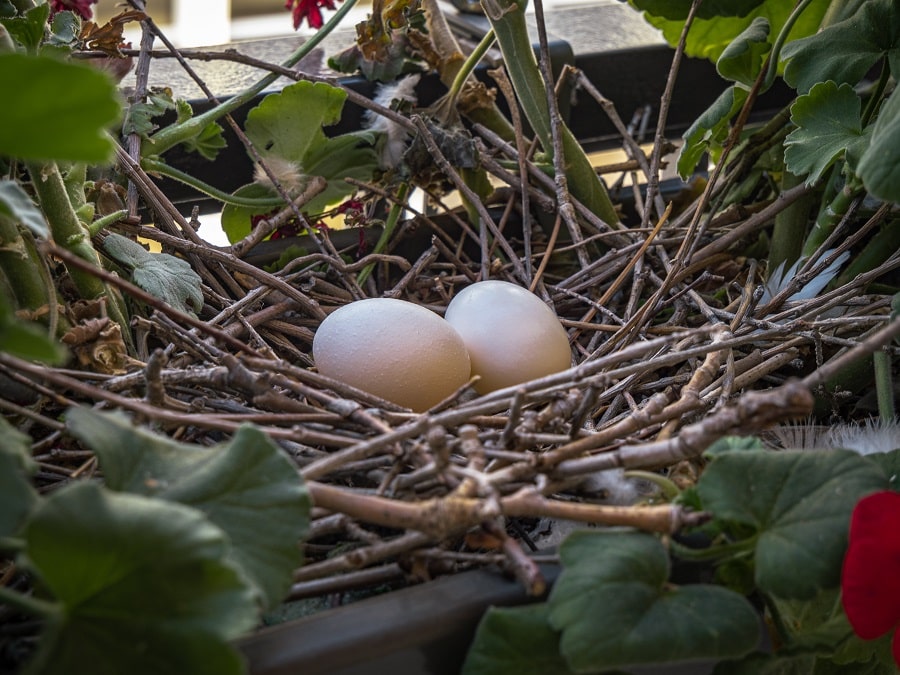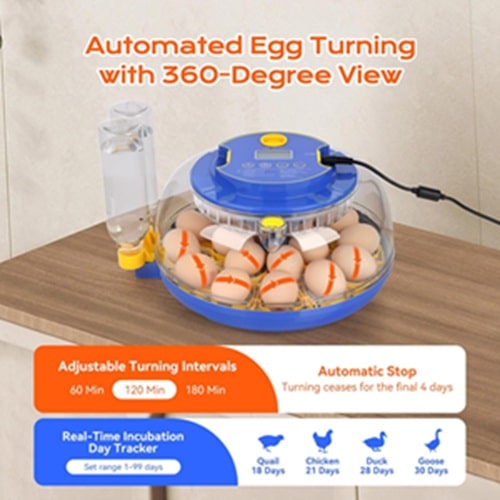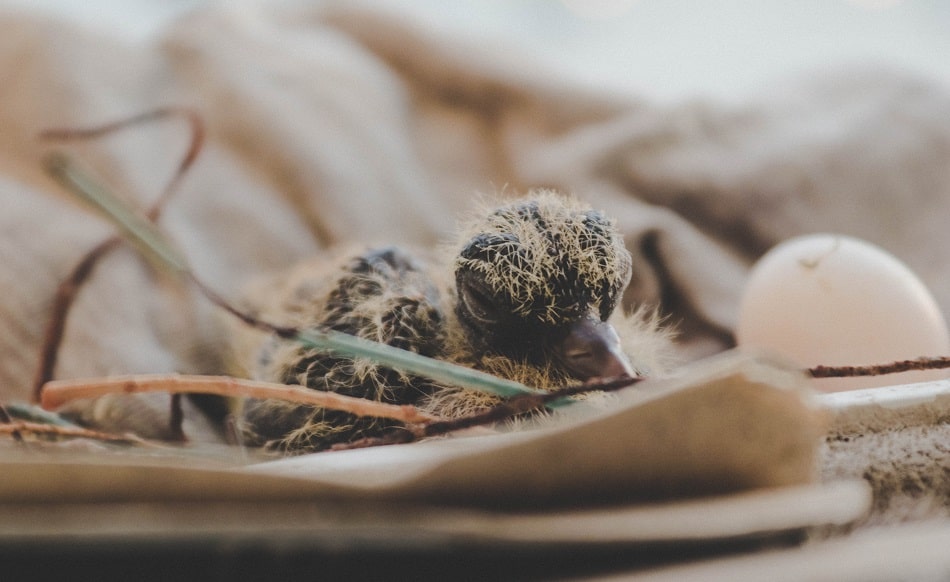Candling and Hatching a Pigeon Bird Egg - How To
Raising and breeding pigeons and domestic doves is becoming more popular around the globe. The breeds available are nearly endless, with Tumblers Rollers, and Homers as popular types.
At some point, you may want to start by hatching an egg and bringing it up to adulthood.
Use the incubation time to get the knowledge you'll need to successfully raise pigeons once they hatch.

How to Candle a Pigeon Bird Egg
Candling is simply shining a bright light through an egg while in a dark room, to see the inside of the egg.
It is often used to check the development of a fertilized egg, to determine if it is fertile and whether the embryo is developing properly.
It can also be used to detect any abnormalities or defects in the egg.
Pigeon eggs can be candled by holding them up to a bright light or by using a candling device specifically designed for this purpose.
To candle a pigeon egg, you will need a bright light source and a dark room. Hold the egg up to the light and rotate it to check for any abnormalities.
A healthy egg will appear clear and have a small air cell at the larger end. A fertilized egg will have a small dark spot, which is the developing embryo.
If there are any cracks or abnormalities, the egg should not be used for incubation.
Best Type of Light for Candling Bird Eggs
A bright, consistent light source is best for candling eggs.
A common choice is an LED flashlight or an incandescent light with a dimmer switch. A bright overhead light can also be used.
Avoid using candlelight or a flickering light source, as this can make it difficult to see inside the egg.
An easy way to candle the eggs is to cut a hole in a box smaller than the egg.
Turn on your LED flashlight and place it inside the box below the hole. Don't let the light touch the box.
Now you can place the egg in the hole you made in the box, allowing you to turn the egg. This eliminates holding both the light and egg at the same time.
How do I hatch a Pigeon Bird Egg Without an Incubator?
To keep a bird egg warm without an incubator, you can use a method called "banty hatching".

This involves keeping the egg warm using a heat source and turning it regularly. Here are the steps:
- Find a warm location: Choose a warm location to place the egg, such as near a heating vent or on top of a heating pad.
- Make a banty incubator: To make a banty incubator, wrap the egg in a soft cloth and place it in a box. Put a heat source, such as a hot water bottle, near the egg to provide warmth.
- Monitor the temperature: Regularly check the temperature inside the banty incubator to make sure it stays at a constant temperature of around 99–100°F (37–38°C).
- Turn the egg: Regularly turn the egg (at least three times a day) to prevent the yolk from sticking to one side of the egg.
- Wait for hatching: It can take anywhere from 10 to 12 days for a bird egg to hatch.
Note: The success rate of banty hatching is low compared to using an incubator, as it can be difficult to maintain a consistent temperature and humidity.
If possible, it is best to use an incubator to hatch bird eggs.
Use Brood Hatching in the Place of Incubator
This second way of hatching a pigeon egg without an incubator requires the help of another pigeon breeder.
This method is called "brood hatching". This involves finding a healthy and broody pigeon to hatch the egg. Here are the steps:
- Find a broody pigeon: A broody pigeon is a female that wants to hatch eggs. She will sit on the eggs constantly and maintain the temperature.
- Place the egg under the broody pigeon: Once you have found a broody pigeon, gently place the egg under her in the nest. She will begin to incubate the egg and care for it.
- Monitor the egg: Regularly check on the egg to ensure it remains under the broody pigeon and hasn't been damaged.
- Wait for hatching: It takes approximately 17-19 days for a pigeon egg to hatch. The broody pigeon will take care of the egg until it hatches.
- Obtain an incubator: Purchase or build an incubator that is specifically designed for hatching eggs.
- Set the temperature to 37.5—38.5°C and the humidity to around 60%. Pigeon eggs require a consistent temperature and humidity to hatch successfully.
- Place the egg in the incubator with the small end down and the large end up. Make sure the egg is not touching any other eggs or the sides of the incubator.
- Regularly check the temperature and humidity levels to ensure they remain within the correct range.
- Regularly turn the eggs (at least three times a day) to prevent the yolk from sticking to one side of the egg.
- It takes approximately 17-19 days for a pigeon egg to hatch. Once it's ready to hatch, the chick will start to peck its way out of the shell.
- Remove the chick: Once the chick is fully hatched, remove it from the incubator and place it in a warm, safe, and well-ventilated brooder.
Note: Using a broody pigeon to hatch eggs is not always successful and there is a risk of the egg being damaged or not hatching.
Incubators provide a controlled environment and increase the chances of success.
How to Use an Incubator to Hatch a Pigeon Egg

To use an incubator to hatch a pigeon egg, follow these steps:
Note: It's important to follow the manufacturer's instructions for your specific incubator and maintain the recommended temperature and humidity levels for the best chance of success.
How to Care for a Newly Hatched Pigeon Squab
To care for a newly hatched pigeon squab (young pigeon), follow these steps:

Provide warmth: Place the squab in a warm and well-ventilated brooder with a heat source.
A heat lamp or heating pad can be used to maintain a temperature of 95°F (35°C) for the first week, reducing the temperature by 5°F (2.7°C) each week thereafter.
Offer food and water: Pigeon squabs require a special diet of pigeon starter feed, which can be purchased from a pet store.
Offer food and water in a shallow dish and make sure the squab can access it easily.
Clean the brooder regularly and replace the bedding as needed. This will help to prevent the spread of disease and keep the squab healthy.
Monitor the squab for any signs of illness or distress. Contact a veterinarian if you suspect the squab is unwell.
Pigeon squabs need mental and physical stimulation to develop properly. Offer toys and perches to encourage exercise and exploration.
Pigeons are social birds and need to be socialized from an early age.
Spend time with the squab daily, handling and talking to it to help it develop a bond with you.
The specific care requirements for pigeon squabs may vary, so it is important to consult a veterinarian or pigeon breeder for more information.





